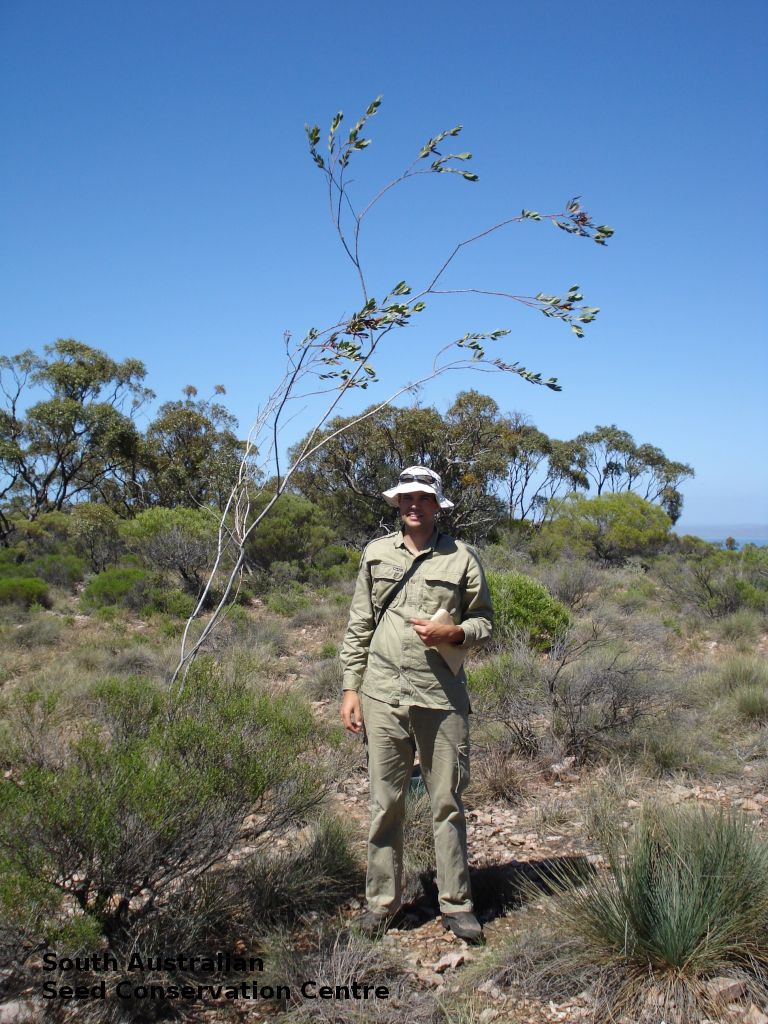
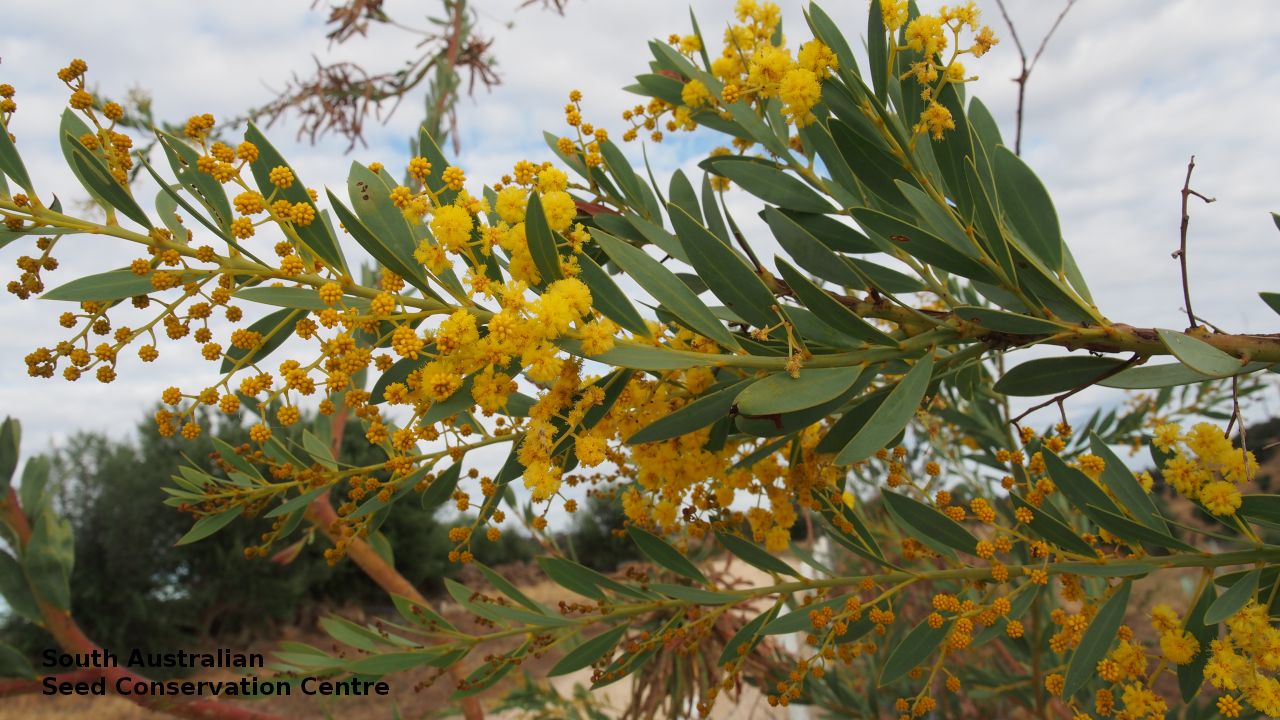

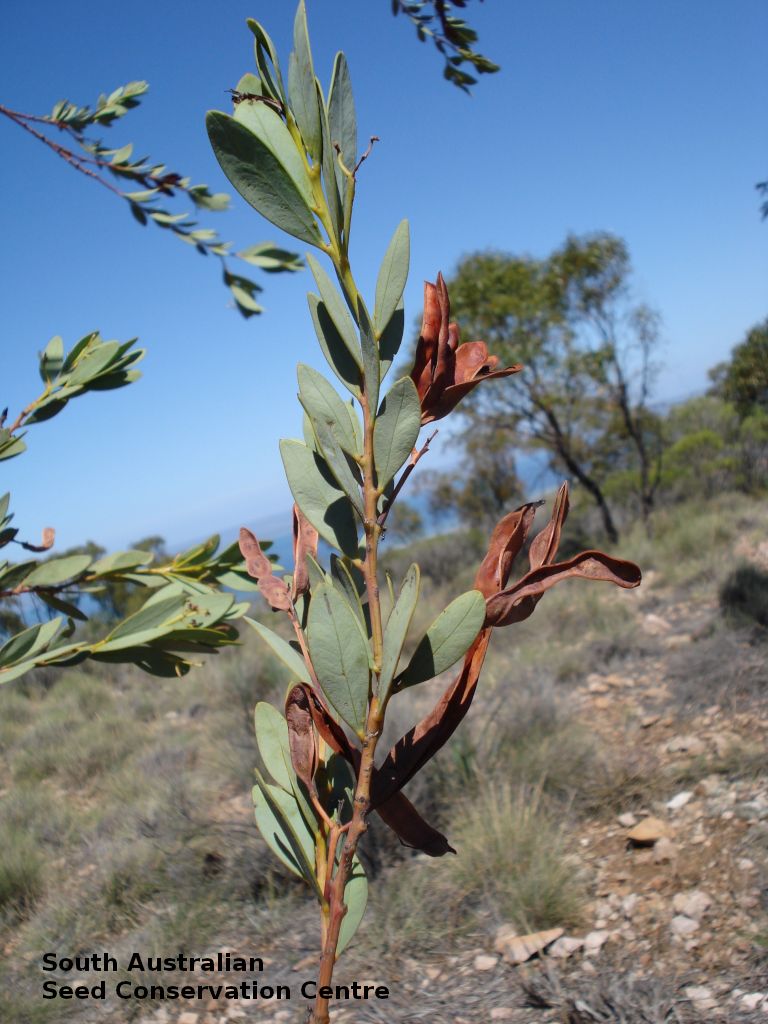

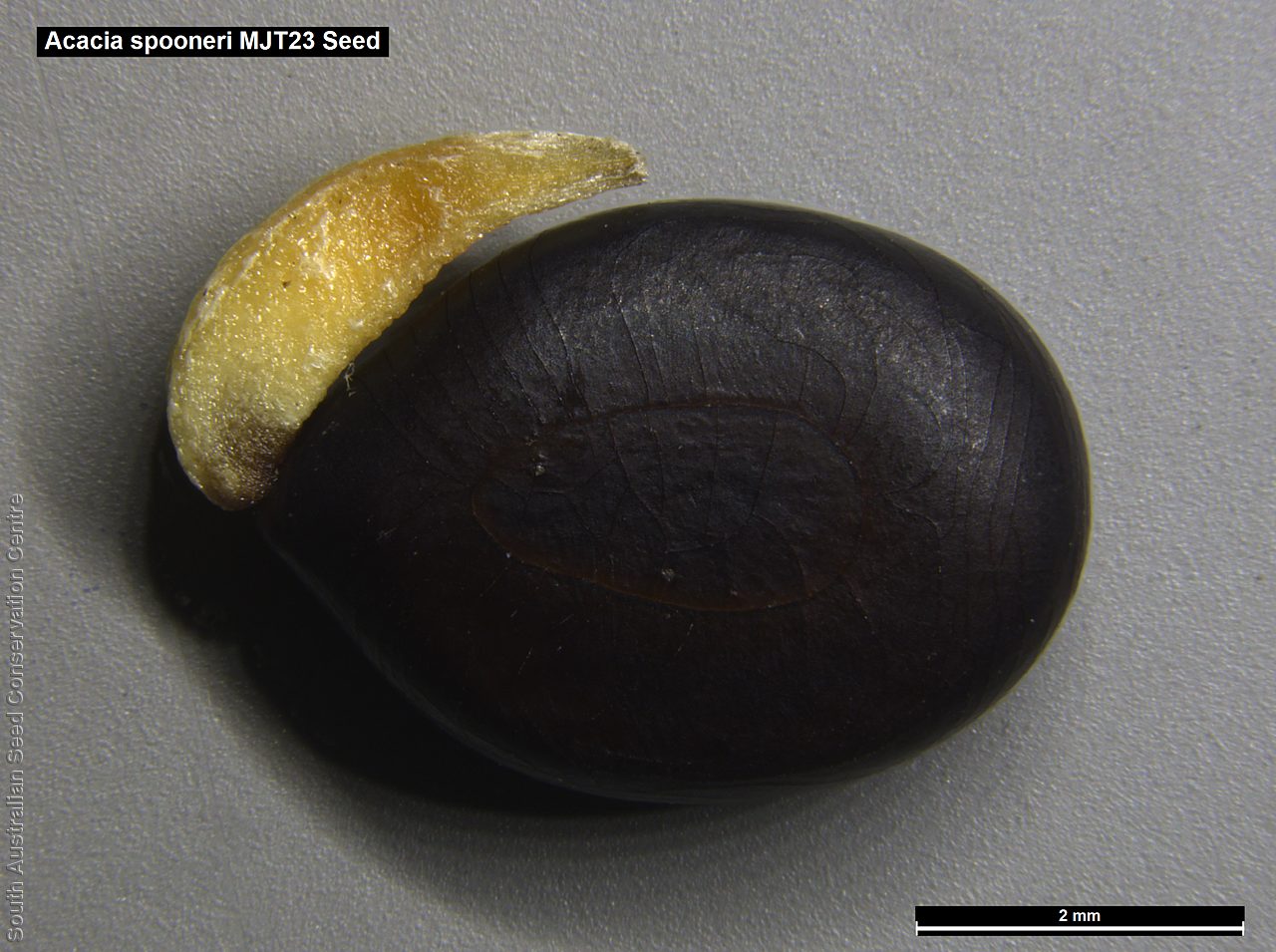

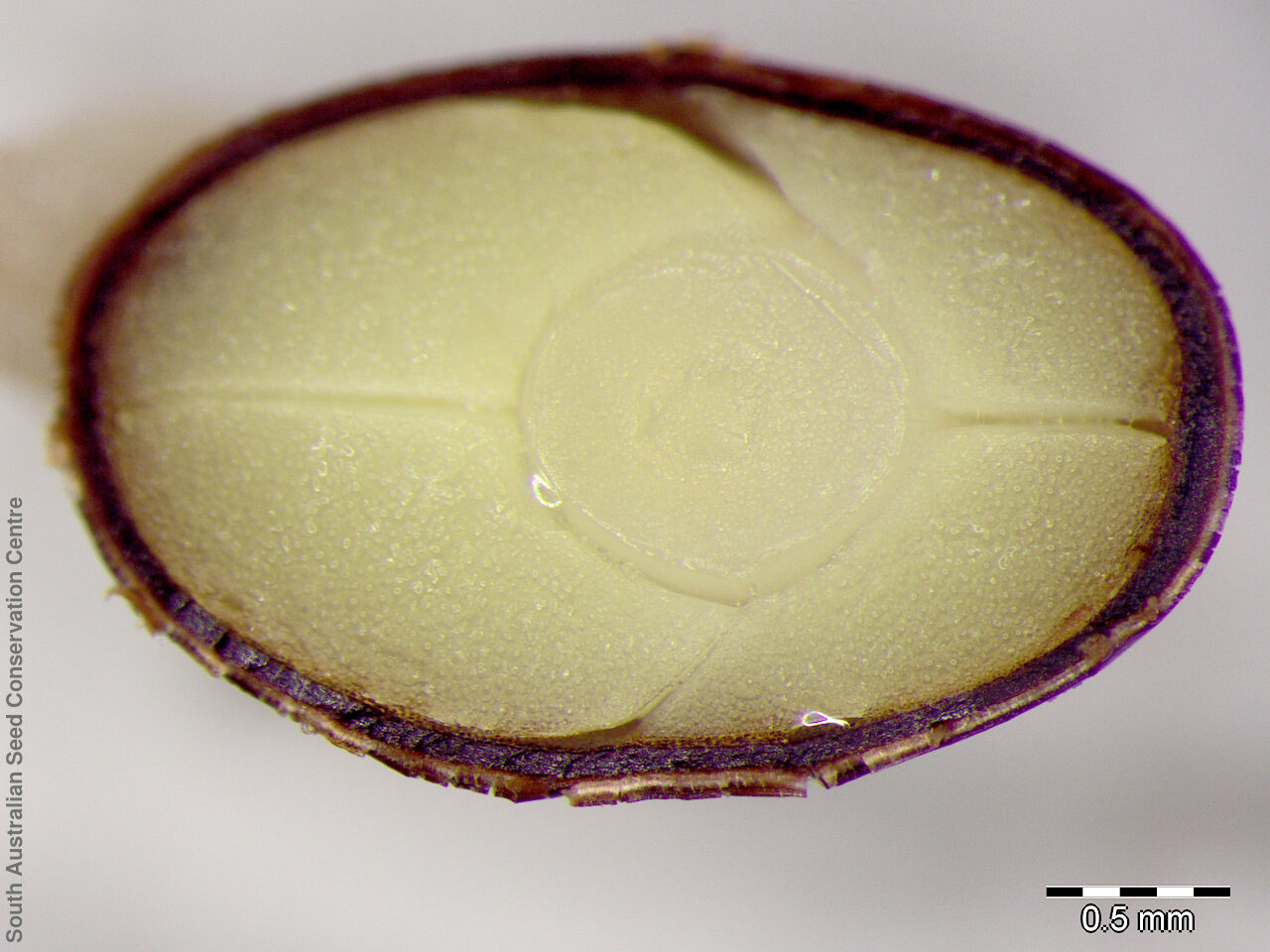

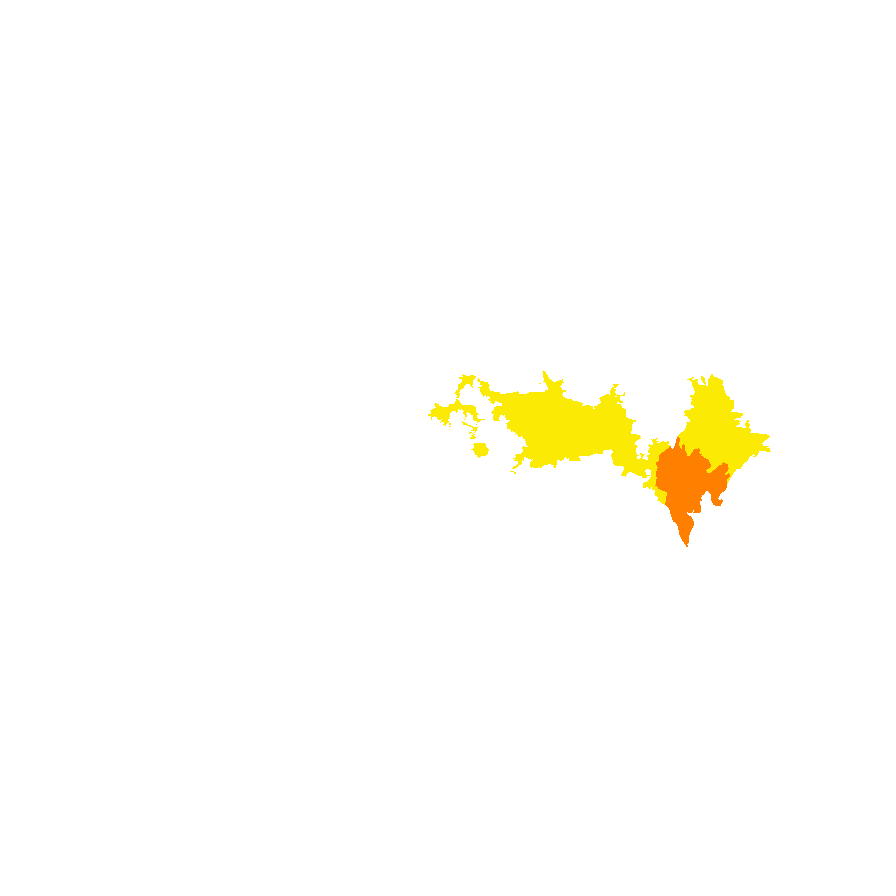
Prior names
Acacia "Nectar Brook"
Acacia wattsiana (Nectar Brook variant)
Etymology
Acacia from the Greek 'akakia' and derived from 'ake' or 'akis' meaning a sharp point or thorn and 'akazo' meaning to sharpen. Dioscorides, the Greek physician and botanist used the word in the 1st century AD for the Egyptian thorn tree, Acacia arabica. Spooneri named in honour of Dr. Anthony G Spooner (1927-1997), a South Australian Physician and field botanist
Distribution and status
Endemic to South Australia and restricted to a few areas in the Flinders Ranges. Native. Rare in South Australia.
Herbarium regions: Flinders Ranges, Northern Lofty
NRM regions: Northern and Yorke, South Australian Arid Lands
AVH map: SA distribution map (external link)
Plant description
Erect but sparsely canopied shrub to 2 m, with weak drooping branches. Flowers are yellow round balls appearing in winter and spring. Fruits are large flat pods to 10 cm long which turn brown and split open when mature. Seeds are hard, dark black semi-flat seeds to 6 mm long and 4 mm wide. Seed embryo type is investing.
Seed collection and propagation
Collect seeds between November and December. Collect pods that are split or turning brown, with hard, black seeds inside. Place the pods into a tray and leave to dry for a week. Rub the dried pods by hand or with a rubber bung to dislodge the seeds. Use a sieve to separate the unwanted material. Store the seeds with a desiccant such as dried silica beads or dry rice, in an air tight container in a cool and dry place. From one collection, the seed viability was high, at 100%. This species has physical dormancy that needs to be overcome for the seed to germinate (e.g. nicking or softening the seed coat).
| Location | No. of seeds (weight grams) | Number of plants | Date collected | Collection number Collection location | Date stored | % Viability | Storage temperature |
|---|---|---|---|---|---|---|---|
| BGA MSB | 9,200 (184.76 g) 9,200 (184.76 g) | 100+ | 9-Nov-2006 | MJT23 Flinders Ranges | 1-Aug-2007 | 100% | -18°C |
Number of plants: This is the number of plants from which the seeds were collected.
Collection location: The Herbarium of South Australia's region name.
% Viability: Percentage of filled healthy seeds determined by a cut test or x-ray.